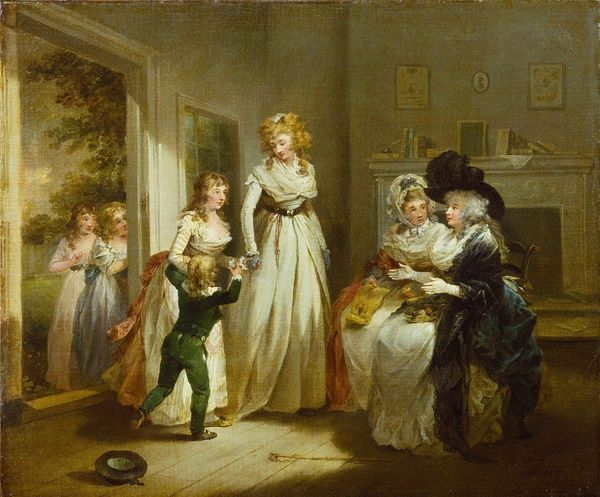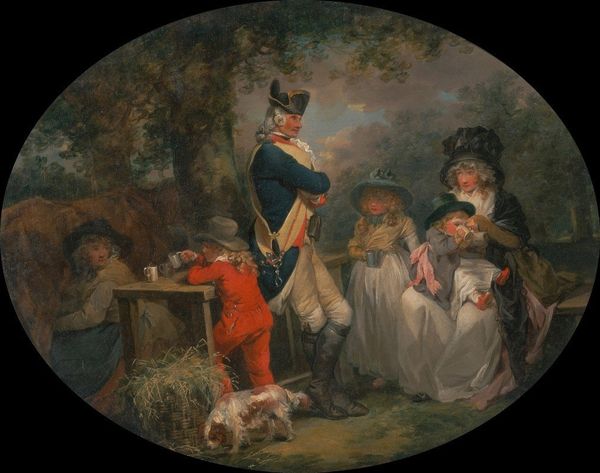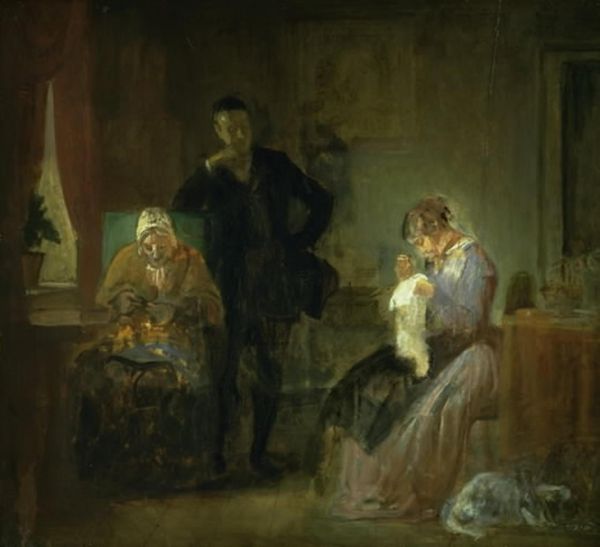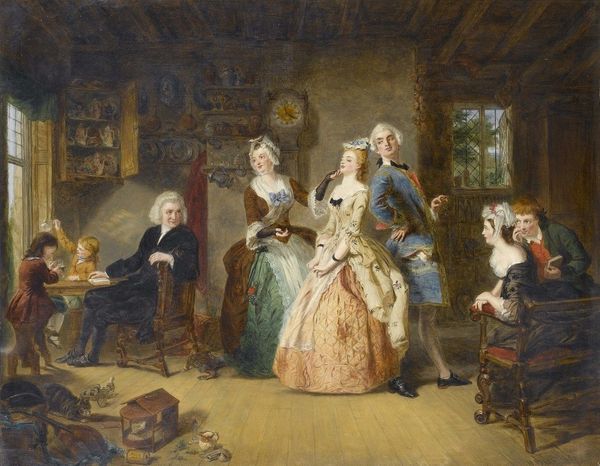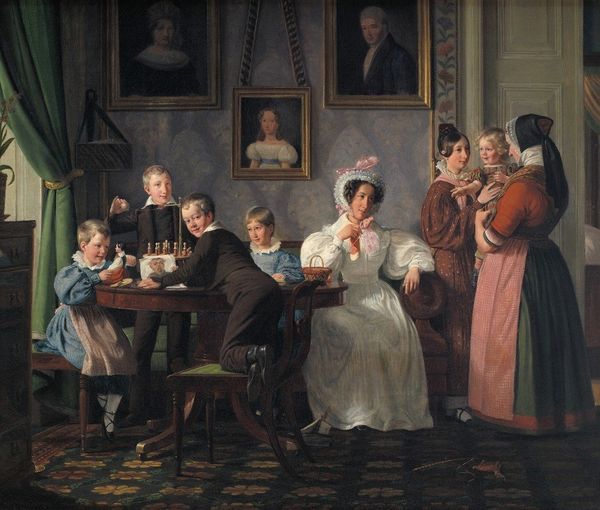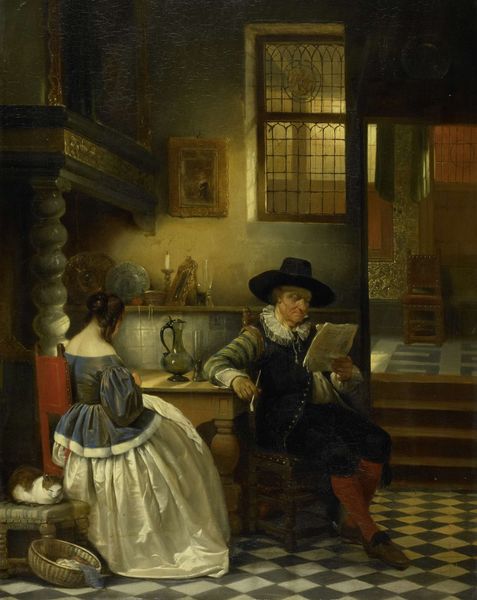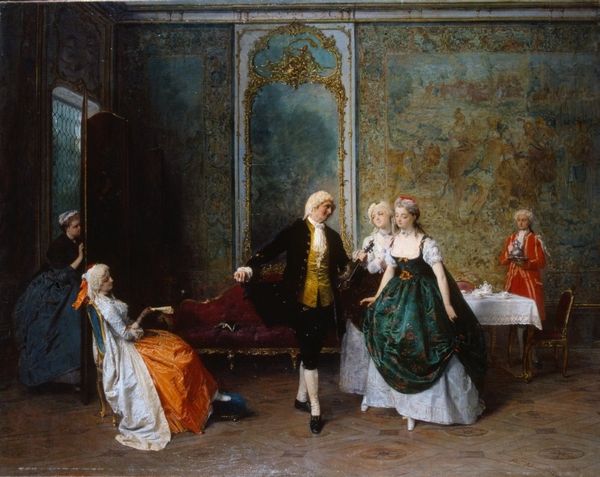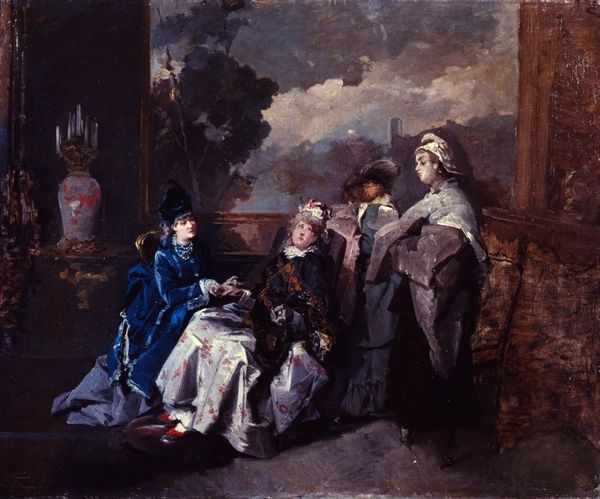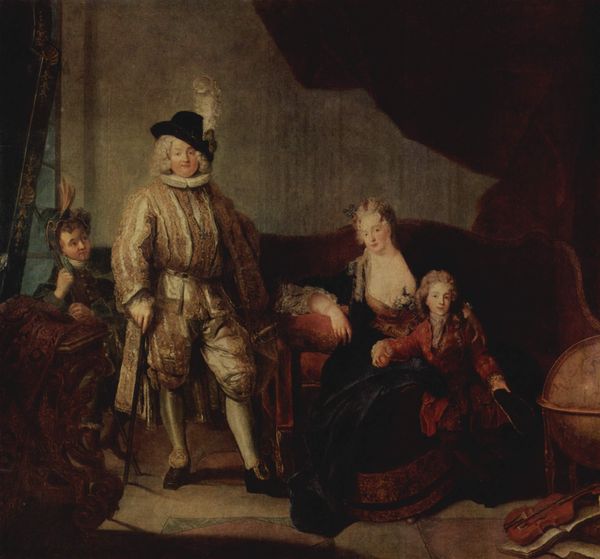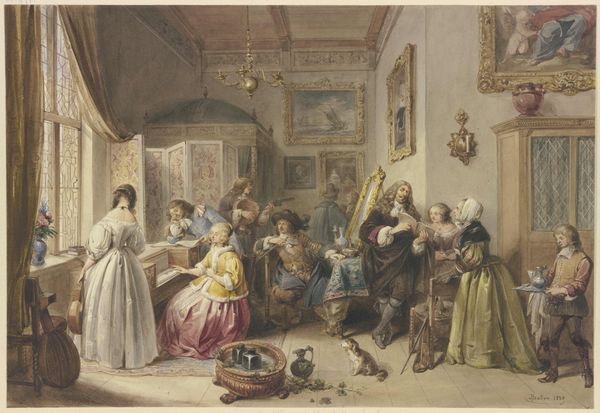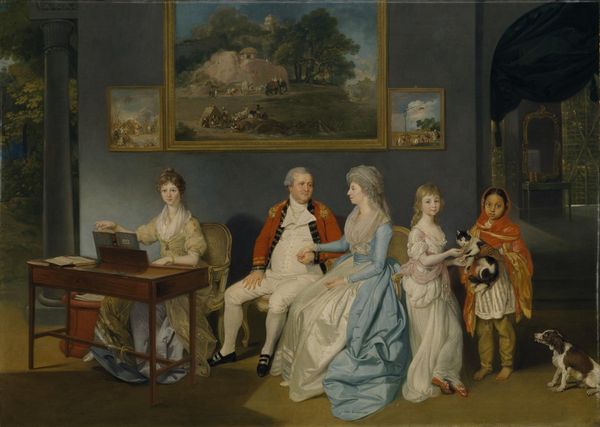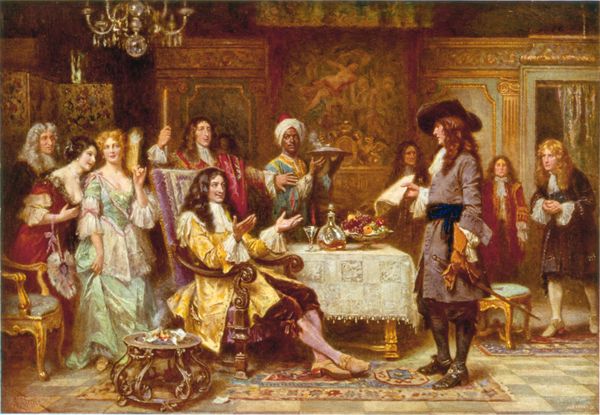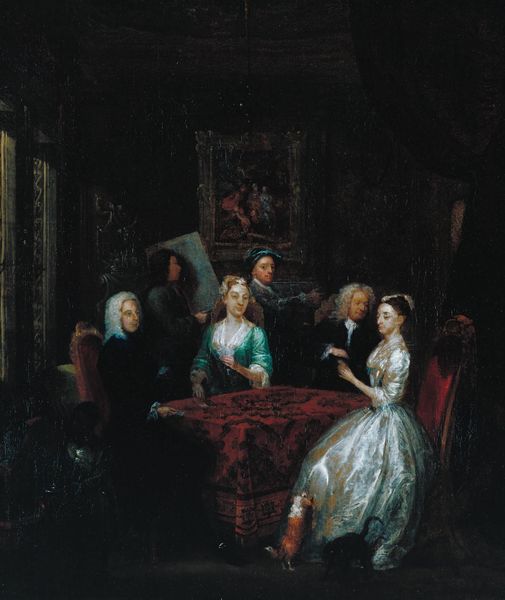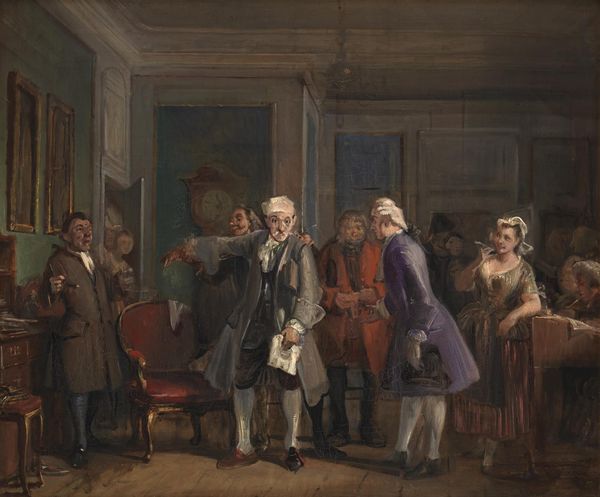
Dimensions: support: 457 x 533 mm frame: 655 x 732 x 107 mm
Copyright: CC-BY-NC-ND 4.0 DEED, Photo: Tate
Curator: George Morland's painting, "The Fortune Teller," now in the Tate, gives us a glimpse into late 18th-century social life. Editor: Immediately, I’m struck by the contrast: the soldier's bright red coat against the muted tones of the women's attire and the rather simple room. Curator: Precisely. Morland was known for depicting everyday scenes, often with a touch of social commentary. This work likely reflects the anxieties and social mobility of the era. Editor: And it's all in the making, isn't it? Note the materiality: the rough canvas, the loose brushstrokes, suggesting haste, perhaps reflecting the changing social values of labor. Curator: Indeed, we see the emergence of a new consumer culture reflected in the fortune teller's trade and the soldier's patronage of it. It challenges the established class structure of the time. Editor: Considering the composition and craft, it leaves me pondering on the soldier's place in this narrative. The materials tell a story of aspiration and precarity, don’t you think? Curator: A very insightful observation. These dynamics of social class and the business of fortune-telling offer a rich perspective on Georgian society.
